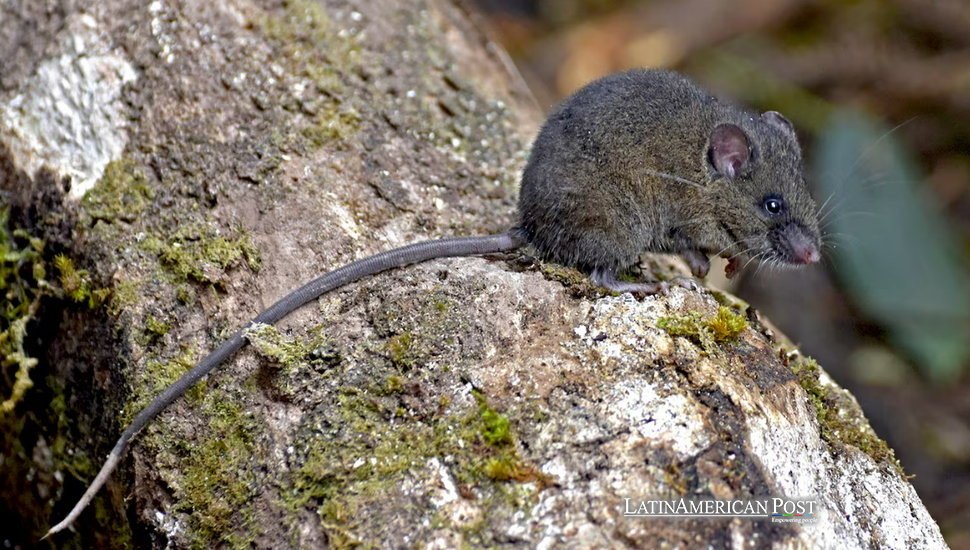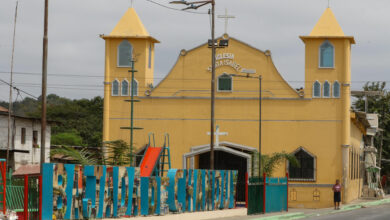Discovering Ecuador’s Andes: New Species of Mice Found Among the Peaks

Scientists have identified a second mouse species with a tail longer than its body and another similar species in the Andean highlands of northern Ecuador. This discovery adds to our understanding of Ecuador’s wildlife and highlights the remarkable biodiversity in the Andes.
A High-Altitude Discovery: Otavalo’s Andean Mouse
Nestled within the high-altitude forests just north of Quito, Ecuador’s capital, a team of researchers stumbled upon an intriguing new species: the Otavalo’s Andean mouse, or Thomasomys Otavalo. Measuring under five inches from head to body, this tiny creature boasts a striking feature—a tail over six inches long, significantly longer than the rest of its body. A study published in Vertebrate Zoology shows that the mouse’s distinctive “very long tail” sets it apart from other species.
Researchers shared their findings: “The specific epithet ‘Otavalo’ honors the Otavalo culture. “The Otavalo people are celebrated across South America for their rich cultural heritage in textiles and music. Naming the new species after this Indigenous culture pays tribute to their enduring legacy.
The Otavalo’s Andean mouse, adapted to Ecuador’s rugged terrain, has “fine, dense, and soft” fur that shifts in color from dark drab on the back to brown on the sides. The hair is a lighter shade of gray, and ground cinnamon on its stomach. The mouse’s tail, uniformly dark with a white tip, is covered in tiny scales and hairs, a unique characteristic among its genus, Thomasomys.
An Environment of Orchids and Volcanoes
The Otavalo Andean mouse is native to the Andean montane forests of Ecuador. It thrives in temperate, high-altitude environments rich in orchids, ferns, and bromeliads. These forests vary significantly and provide an ecological niche between 2,300 meters (7,500 feet) and 3,700 meters (12,000 feet). This area is characterized by lush vegetation. The new species was discovered less than 50 miles from Quito, near Mojanda, a dormant volcano featuring an inner caldera filled with lakes.
Researchers highlighted the challenges and importance of locating such endemic species. “Thomasomys otavalo is thus far limited to specific Andean zoogeographic areas,” they noted, indicating that the mouse’s habitat is particularly vulnerable. Combining rare plants and volcanic terrain creates an ecosystem rich in wildlife, making the discovery of new species even more critical for conservation efforts.
The Hunt Isn’t Over Finding Igor’s Andean Mouse
Researchers have discovered a second species alongside Otavalo’s Andean mouse: Igor’s Andean mouse, scientifically known as Thomasomys igor. Found in a similar high-altitude region, Igor’s Andean mouse features brown fur and a long tail. Although no full-body photographs were taken, researchers analyzed preserved specimens of the mouse. Using DNA tests, researchers Jorge Brito and Rub García confirmed this mouse was a member of another species in storage simultaneously, but different from Ecuador. Working with an international team, they cataloged and helped identify the new species. The role of genetics in identifying sister species, which differ only slightly in appearance and DNA sequence, becomes clear from this work, with the discovery potentially being quite prominent taxonomically.
Ecuador’s Biodiversity: A Rich Tapestry of New Species
The Andean mouse found in Otavalo and Igor are part of a broader examination of Ecuador’s unique ecosystems. Every year, thousands of new species are discovered in habitats ranging from grotesque apes in rainforests to exotic predators in tropical swamps. Scientists celebrate these findings as they demonstrate the resilience of environments that teem with youthful life.
Also read: Chile Pioneers Region’s First 3D Printed ‘Seed House’
Ecuador records its own biodiversity; however, finds like this highlight the need for careful ecological studies to understand and conserve fragile planetary ecosystems.




